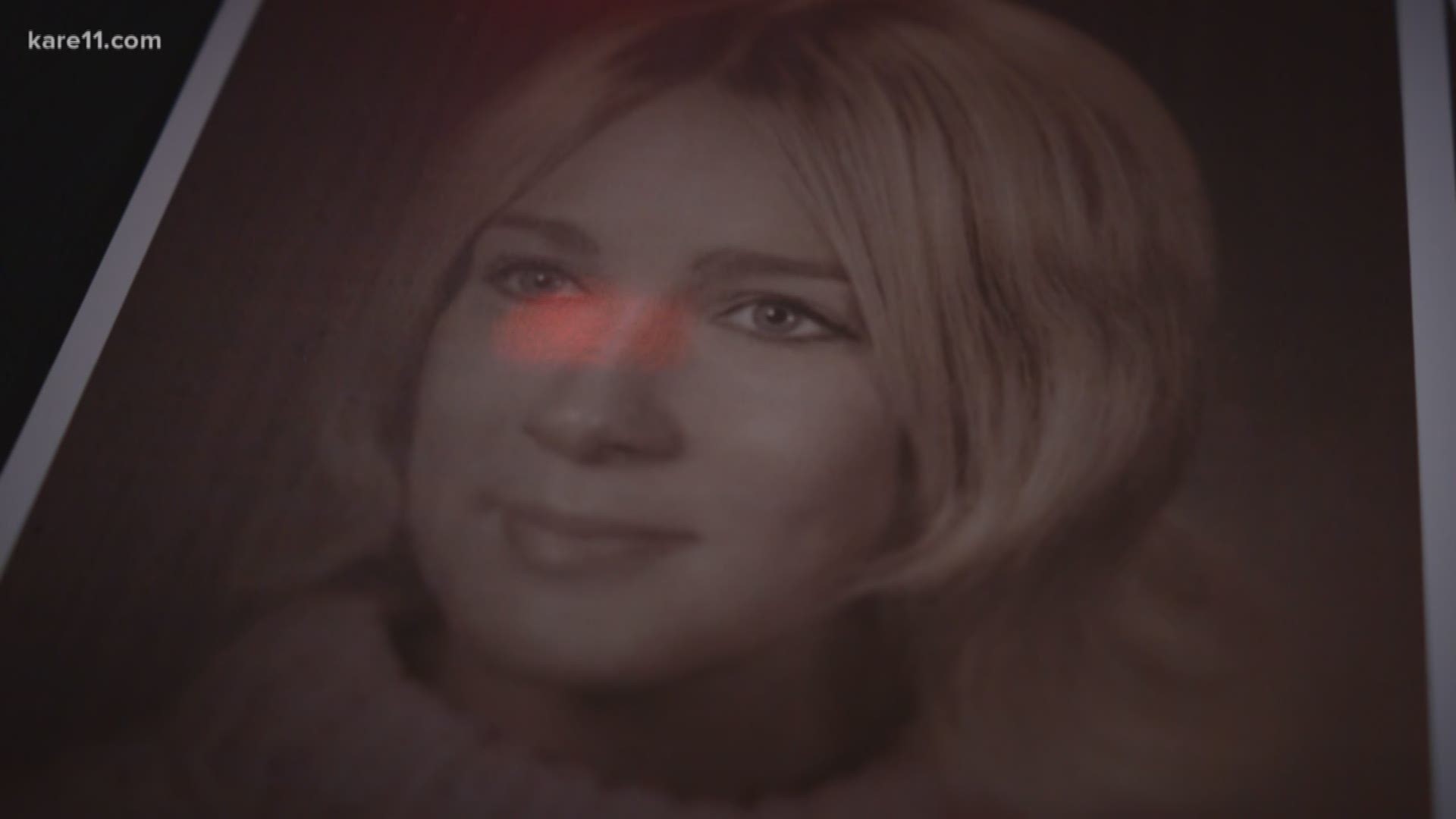ST. PAUL - In early November of 1970, an 18-year-old college student named Gloria Rieken left her apartment on University Avenue in Minneapolis to walk to class at the University of Minnesota. She never returned.
Rieken's parents and five younger siblings spent decades tormented by Gloria's disappearance.
They had no clue whether she was alive or dead.
"My mom and dad, and siblings, always wondered," brother Rich Rieken said. "What happened to Gloria?"
A few years ago, they turned to DNA evidence in hopes of a breakthrough. After watching a news report about DNA evidence, they decided to submit samples to law enforcement.
Rich got a phone call last week.
"Out of the blue," Rich said, "they had a match."
Police had traced Gloria's DNA to a previously unidentified body found in a burned Mille Lacs County farmhouse — a case that itself had been a mysterious cold case for the Mill Lacs County Sheriff's Office. In the Nov. 13, 1970 edition of the St. Cloud Times, a woman had reportedly been found in the "ruins of a burned out building." Police believed she was dead before the fire but could not determine her identity.
On Wednesday, Mille Lacs County Sheriff Don Lorge hailed the assistance of DNA and pledged to move forward to find out how Gloria died.
"This is the first break in the case in nearly a half century," Lorge said. "Now, we can piece together how she came to Mille Lacs County."
It's the second major DNA breakthrough announced by police in Minnesota in as many days.
On Tuesday, Minneapolis Police announced an arrest in a 1993 murder. Police said they traced the suspect in that case by matching DNA to the original crime scene, with the help of a private DNA company and an online genealogy website.
Kyle Loven, a retired FBI special agent, said the advancement of DNA has given police a tool they never could have dreamed of decades ago.
"You have a science, which, absent mistakes, is virtually infallible," Loven said.
Although DNA technology wasn't prevalent until recently, Loven said detectives in the 1970s and 1980s would often collect as much evidence as possible to preserve for the future. Now, with the advances in technology and the creation of databases like NAMUS, it is much easier for police to link missing persons cases with unidentified remains to identify victims — and it's also easier to simply catch suspects themselves.
The use of genology websites — such as the 1993 Minneapolis case or the high-profile Golden State Killer — has made some uncomfortable, however.
Loven says the balance between civil liberties and law enforcement needs is tricky.
"It's a very good question," Loven said. "I think legislators in and around the country -- coupled with the courts, specifically judges -- are going to have the final say."
For Gloria Rieken's family, though, DNA is just the first step to finding out how she died and if someone killed her.
"I realize it might be a lot to ask after all these years," Rich Rieken said, "but the hope is still there."

